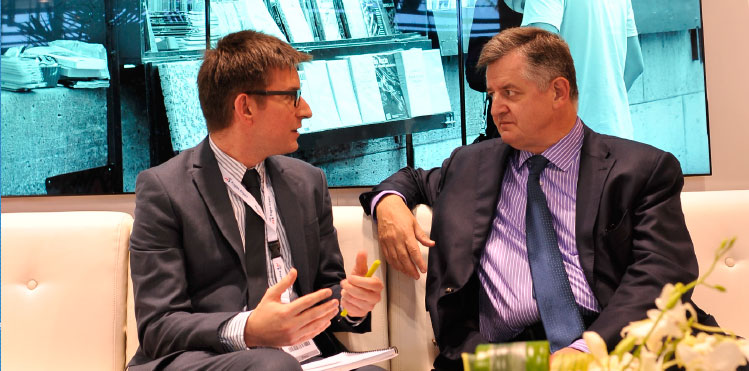
Augustin de Romanet, Chairman and CEO of Aéroports de Paris (right), talks to Airport Business. “Our challenge is to boost our competitiveness in order to attract air traffic to Paris and make our airports as attractive as possible to airlines by providing exactly what they need, regardless of their business model.”
AB: You were reappointed as head of Aéroports de Paris in July. What have been your most significant achievements in your role as Chairman and CEO, and what are your objectives over the next five years?
de Romanet: It is with pride and determination that I continue my action within Aéroports de Paris. Over the next five years, I will pursue the objective of making our Group a global leader in the design, construction and operations of airports. Important decisions have been taken and a number of projects have been launched since I arrived at Aéroports de Paris in November 2012. First of all, I have put in place a cost-saving plan and a review of investments so as to obtain the best possible value for money. Over the next five years, we will continue to step up our efforts in the field of financial discipline.
In a highly competitive environment, our second challenge will be to boost our competitiveness in order to attract air traffic to Paris and to make our airports as attractive as possible to airlines by providing exactly what they need, regardless of their business model, as well as to passengers, especially in terms of hospitality and quality of service. 88% of passengers surveyed in 2013 said they were satisfied and appreciated in particular the cleanliness, the ambiance, and the safety and security measures at our airports. This excellent result has been achieved two years ahead our 2015 target.
Meanwhile, in order to be closer to our clients, we have decided to transfer the Aéroports de Paris Group head office from the centre of Paris to Paris-Charles de Gaulle Airport in 2016. I have also pushed strongly for the introduction of CDG Express, a non-stop rail link between Paris and Charles de Gaulle Airport. This project is crucial to the continued development of air traffic. Paris is the only major city in Europe without this type of service. CDG Express is due to be commissioned in 2023.
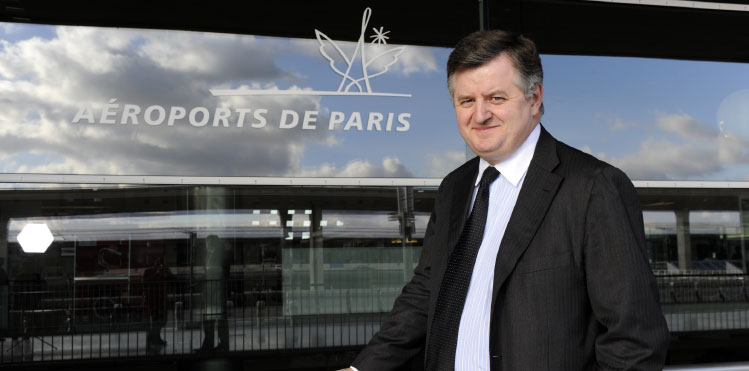
On de Romanet’s decision to move the corporate offices: “In order to be closer to our clients, we have decided to transfer the Aéroports de Paris Group head office from the centre of Paris to Paris-Charles de Gaulle Airport in 2016.”
AB: What other infrastructure developments or expansion plans, if any, do you have for Paris-CDG and Paris-Orly?
de Romanet: Over the 2006-2012 period, capacity at Paris-Charles de Gaulle Airport increased sharply from 47 to 80 million passengers. We have upgraded our facilities to accommodate super-widebody aircraft, and put in place new infrastructure that complies with the highest international standards of quality. As a result, Charles de Gaulle Airport should be able to absorb traffic growth without adding new infrastructure until at least 2023-2024. We will need to continue to renovate the oldest facilities, such as the satellites at Terminal 1. Satellite 5, which was renovated last year, now accommodates the A380s operated by Malaysia Airlines and Thai Airways. At Terminal 2B, which is currently closed, we will create a connecting building to link it to Terminal 2D, just as we did to link Terminals 2A and 2C. Baggage handling areas have also been refurbished, and this has helped to enhance the customer experience at arrivals and departures.
At Paris-Orly Airport, a major modernisation plan has been underway since 2012 aimed at improving the passenger experience and enabling capacity to be increased by 5 million passengers by 2018, without exceeding the current limit of 250,000 take-off and landing slots per year. The most spectacular feature of this project is an 80,000m2 connecting building to link the two existing terminals: Orly-Ouest and Orly-Sud.
AB: How do you think CDG works as a transfer hub for AF/SkyTeam passengers as compared with KLM at AMS, LH at FRA, even BA at LHR T5?
de Romanet: With 62 million passengers in 2013, Paris-Charles de Gaulle is Europe’s second-busiest airport and Air France’s international hub. We believe it is also the best-performing hub in Europe, offering up to 25,000 weekly connecting possibilities within two hours between long- and medium-haul flights.
One-third of all passengers at Paris-Charles de Gaulle are connecting to other flights and, since 2012, connections have become shorter and faster for passengers coming from a Schengen country and travelling on to an international destination. Changes in legislation mean that passengers no longer need to pass through security during their stopover in Paris thanks to the introduction of the Schengen single security checkpoint; new connecting channels between Terminals 2E and 2F enable them to stay in a dedicated area from their arrival to their onward flight. 90% of customers from the Schengen area – equivalent to 10,000 passengers per day – benefit from this new single security checkpoint policy, which allows them to save up to 10 minutes on their connection time. This new procedure has contributed to increasing the attractiveness of the Paris hub.
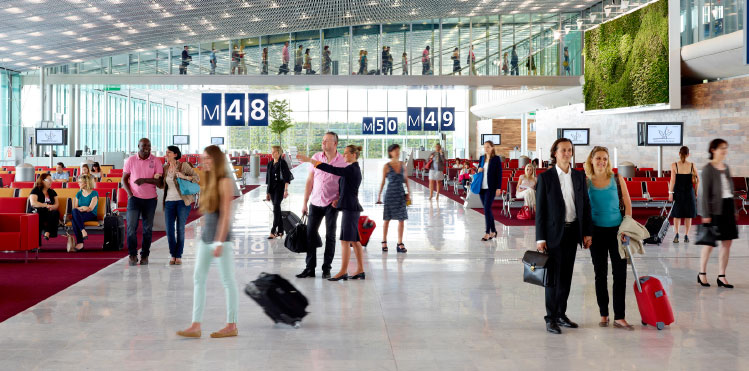
As a true hub one-third of all passengers at Paris-Charles de Gaulle connect to other flights. 90% of customers from the Schengen area – equivalent to 10,000 passengers per day – now benefit from the Schengen single security checkpoint which has reduced connections times by up to 10 minutes: “This new procedure has contributed to increasing the attractiveness of the Paris hub.”
AB: What further international ambitions does ADP have through ADP Ingénierie and ADP Management?
de Romanet: Our ambition is to make Aéroports de Paris Group a world leader in airport design, construction and operations. To achieve this goal, we must develop a much more integrated approach and tap the synergies between the Group’s different entities; in particular the two wholly-owned subsidiaries: ADP Ingénierie (ADPI) – a world leader in designing airports with an unrivalled track record in airfield master planning, control tower and infrastructure design – and ADP Management (ADPM), which invests in airport companies and manages airport operations outside of the Paris region. These two are highly-complementary.
In a recent example of this more integrated approach, Mauritius International Airport won the Skytrax 2014 award for “Best Airport in the Indian Ocean Region.” ADPI designed and conducted the feasibility studies for the new terminal at Mauritius International Airport, while ADPM operates it through ATOL, a joint venture with a Mauritian public company, under a 15-year concession.
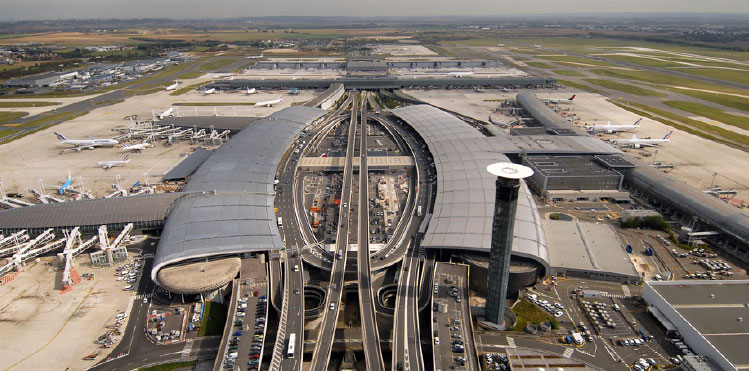
A non-stop, 20 minute rail link between Paris Gare de l’Est and Charles de Gaulle Airport, CDG Express, is due to open in 2023. “This project is crucial to the continued development of air traffic as well as quality of service for passengers.” Construction is set to begin in 2017 and cost €1.7 billion.
AB: How does ADP view its stake in Turkey’s TAV Airports? At the time ADP must have been disappointed when the bidding for the new Istanbul airport rocketed beyond €20 billion and TAV Airports had to pull out?
de Romanet: In 2012, Aéroports de Paris acquired a 38% share in TAV Airports, Turkey’s leading airport operator, and a 49% stake in its subsidiary TAV Construction, a world leader in building airports. This partnership creates one of the world’s biggest airport company alliances, with a portfolio of 37 airports under management, and some 200 million passengers handled in 2013. As we have demonstrated with the Zagreb Airport concession and the call for tenders for the redevelopment of New York’s LaGuardia Airport, our two companies work very well together.
The fact that TAV Airports didn’t win the concession for Istanbul’s third airport is of little importance today. We believe it is unlikely that the new airport will be operational before January 2021 – the end date of TAV Airport’s concession at Istanbul Atatürk Airport. Meanwhile, in September, TAV Airports offered to acquire a 40% stake in Istanbul’s Sabiha Gokçen Airport, Europe’s fastest growing airport, cementing its presence in Istanbul well beyond the end of the concession.
Elsewhere, TAV Airports is strengthening its presence in Turkey, illustrated by the recent successful bid for the Milas–Bodrum Airport concession. This is a major strategic acquisition that will allow TAV Airports to benefit from the dynamism of Turkey’s air traffic until 2030. Moreover, TAV Airports is also present in other countries such as Georgia, Tunisia, Macedonia, Croatia and the Kingdom of Saudi Arabia.
AB: In 2008 much was made of the synergies between ADP and Schiphol Group and an 8% shareholder swap was initiated. What has happened since then? What are the highlights?
de Romanet: Our strategic partnership with Schiphol Group has allowed us to improve the quality of services offered to customers and has laid the groundwork for exchanges on best practices in innovation, procurement, relationships with airlines, human resources, commercial activities, real estate and international development. Numerous meetings have been held over the last few years, to allow the teams involved to exchange ideas on the challenges and difficulties they face, as well as their best practices. This cooperation agreement has been a considerable success and was expanded in 2011 to include Incheon Airport (Seoul). The partnership was extended for another four years in January 2014.
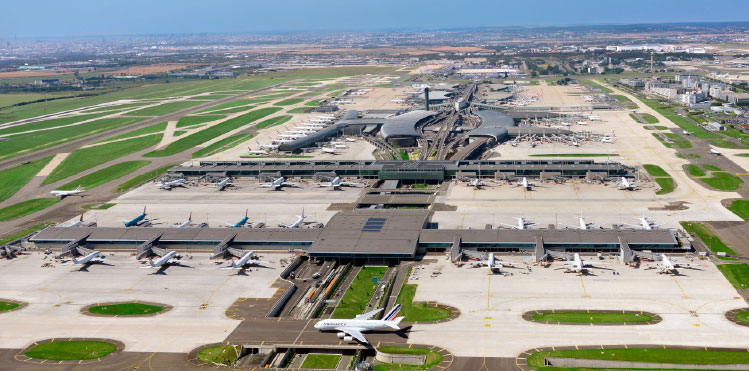
Over the 2006-2012 period, capacity at Paris-Charles de Gaulle Airport has increased from 47 to 80 million passengers and included €100 million in specific modifications related to accommodating the A380 super-widebody aircraft. “As a result, Charles de Gaulle Airport should be able to absorb traffic growth without adding new infrastructure until at least 2023-2024.”
AB: Returning to the subject of the CDG Express rail link, what progress has been made since the ministerial announcement in January? Tell us more about the confirmed role of ADP, the timeline, and costs.
de Romanet: The CDG Express project is key to ensuring the attractiveness of Paris-Charles de Gaulle Airport as well as quality of service for passengers. The project was relaunched through the June 2014 creation of a research company that brings together the French State, RFF (owner and manager of the French railway infrastructure network), and Aéroports de Paris, and is responsible for carrying out the feasibility studies. The French Council of State and the European Commission have yet to give a ruling, but I am confident that the project will go ahead on schedule, which means that construction work should begin in 2017 with commissioning in 2023.
At this moment in time, the cost of the project is evaluated at €1.7 billion. This investment will be covered by charging a fare of €24 per journey (similar to elsewhere in Europe) plus an additional fee of €1 for all airline passengers, except those in transit. The CDG Express line will be 32 kilometres long and will mainly use existing infrastructure. It will connect the airport to the Gare de l’Est mainline station in just 20 minutes. Services will run every 15 minutes from 05.00 to midnight.
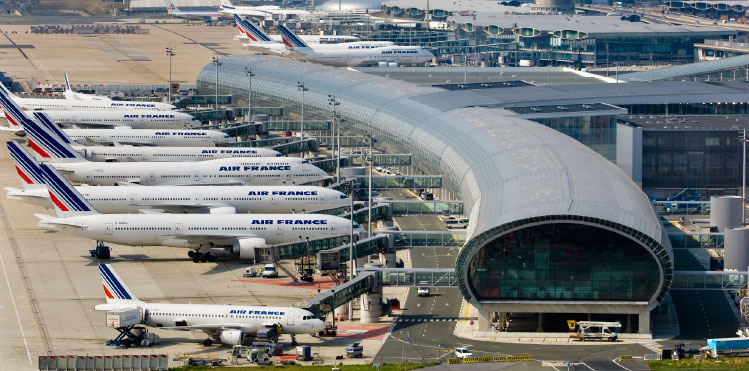
Aéroports de Paris is supportive of the Air France recovery plan. “You can’t have a strong hub in Paris without a strong national flag carrier; Air France has the right strategy.”
AB: Do you think London will build another runway at LHR… and are you worried about the challenge of that?
de Romanet: It’s not my role to comment on whether the UK authorities will take the decision to build another Heathrow runway or not. However, competition provides additional stimulus and is always good for business. We already have four runways at Paris-Charles de Gaulle Airport, which provide us with capacity for 1,300 flights per day on average, rising to 1,500 at peak times.
AB: Are the current issues of your main customer, Air France (the constant business review, suspended switch of capacity to transavia France etc) giving you sleepless nights?
de Romanet: Aéroports de Paris is supportive of Air France in its recovery plan, for a simple reason: You can’t have a strong hub in Paris without a strong national flag carrier. Air France has the right strategy.
Although the recent strike had a negative impact on our traffic figures, I am confident that Air France will remain among the world’s top 10 airlines thanks to a number of advantages: A young aircraft fleet, the size of its long-haul network, the SkyTeam alliance, and partnerships with Etihad for instance…
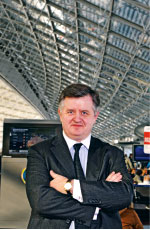
Since the beginning of this year, 16 new airlines have set up at Paris-Charles de Gaulle Airport. “Our approach, and attention to customer service, definitely enables us to attract new airlines to Paris.”
AB: Orly is the battleground for three LCCs – easyJet, Vueling and, increasingly, Transavia France (with 85% more seats this September). How are their needs similar or contrasting? Do these carriers pay ‘a la carte’ for what they need and not for what they don’t need?
de Romanet: There is no particular difficulty in managing customer relationships with these three airlines. We consider each as a single client with specific needs. Usually LCCs ask us to help them to reduce costs and optimise turnaround time. Paris-Orly Airport is well positioned to face these challenges thanks to its compact size, short taxiing times, drop-off areas, and its passenger fast-track lanes.
At Paris-Orly, the needs of LCCs are actually not very different from the legacy carriers which operate mainly medium-haul or point-to-point flights. In the both cases, the check-in needs to be as quick as possible. That’s why common-use check-in kiosks and five automated baggage drop units have been put into service.
The LCCs, like all the other airlines, pay the same fees for use of the airport facilities, infrastructure and equipment, through main fees and ancillary fees (providing check-in counters, facilities for baggage in transit etc). The fact remains that some airline clients have greater demands, like the ability to walk in and walk out to the aircraft. For these specific requests, the airport pays for small adjustments, but the airlines pay for any major works necessary for their processes.
AB: easyJet is now the second-largest carrier at CDG with around 6% of seats. What is ADP doing to encourage more low cost carriers and other airlines?
de Romanet: Our teams work in close cooperation with airlines to provide a high level of services to all, regardless of their business model while, at the same time, remaining attentive to specific needs. Working closely together with easyJet, has led to the implementation of a new operational procedure to allow passengers to disembark simultaneously through the aircraft’s forward and aft doors, allowing easyJet to complete turnarounds within its 35-minute deadline, both at Paris-Charles de Gaulle and Paris-Orly.
Let’s take another example. When the first A380 arrived to Paris in 2009, we had to put in place new facilities such as double or triple boarding bridges. Other terminals facilities, runways, taxiways and de-icing equipment also had to be changed. A total of €100 million was invested to adapt all the airport’s facilities, working upstream with airlines. Today Paris-Charles de Gaulle Airport is the third-ranking airport in the world for the number of airlines operating the A380 and now offers 24 parking stands for the super-widebody aircraft.
Since the beginning of this year, 16 new airlines have set up at Paris-Charles de Gaulle Airport. They include Hunnu Air (offering non-stop flights to the Mongolian capital, Ulan-Bator), Jet Airways (to Mumbai) and, more recently, Hainan Airlines (to Xi’an and Hangzhou, in China). At least five Chinese airlines (Air China, Cathay, China Eastern, China Southern and Hainan Airlines) also serve Paris. Our approach, and attention to customer service, definitely enables us to attract new airlines to Paris.”







